

Three Strip Trial 2014-2022: no dig, forking, different composts
The photo above is from May 2022, potatoes growing in the same place for the 8th consecutive year, and French beans just planted.
The three strips are 2 metres wide, 9 metres long; each strip comprises six small beds. Compost for 1 and 2 is some green waste, some mushroom, a little. homemade
- STRIP 1 soil loosened by forking 10in/25cm depth each autumn/early winter without inversion, then 1in/2.5cm compost on the surface. A different method to my dig/no dig trial.
- STRIP 2 no dig and 1in/2.5cm compost is spread on the beds each winter.
- STRIP 3 no dig, 1in/2.5cm composted cow manure on the surface each winter.
2022
Year 9 was again productive and no rotation beds once again, grew healthy vegetables.
The only thing I’m worried about is that in November, we found some allium leaf miner in the leek beds of all strips, just a few. We found a few elsewhere as well.
Once again in 2022, the forked beds of strip 1 gave slightly lower harvests than the other two strips. There were quite big variations of cropping between vegetables of strips 2 and 3, but the totals were remarkably similar.
- This is also a no rotation trial and in July 2022, the potato harvest in YEAR 8 of growing potatoes in the same bed, was the largest ever. From 1.2×6.5m / 4x20ft, we pulled 58kg / 128lb potatoes. Grown from home saved seed potatoes.
2021
By December 2021 this trial had finished its eighth year since I created its current layout in 2014, testing for the effect of forking soil rather than digging, using different composts, and trialling no rotation. The 2019 video has more on this and you see it in other videos on my You Tube channel.
2021 harvests were 105.9kg strip 1, 105.5kg strip 2 and 113.1kg strip 3.
These are photos from 2021.
2020
2020 results show remarkable similarity between the three strips:
1 – 122.03 kg
2 – 122.40 kg
3 – 125.10 kg
Over the area as a whole, this is more than 2 kg per square metre. I am impressed by this considering the intensity of cropping, and the lack of rotation in some beds. Potatoes, leeks, broad beans, and cabbage are all in their six year of growing in the same place and gave healthy harvests, with totals at least as high as those in previous years.

An infographic by Soul Farm in Cornwall:

Also within this trial are some explorations of no rotation (link to video made September 2016).
This 2019 video explains the no rotation part, ongoing. And Season Change shows the growth through all of one year, in this area.
The three strips are 2 metres wide, 9 metres long; each strip comprises six small beds.
- STRIP 1 soil loosened by forking 10-11in/25-27cm depth each autumn/early winter without inversion, then 2in/5cm bought* compost on the surface. A different method to my dig/no dig trial.
- STRIP 2 no dig, was mulched initially with polythene 2013, and 2in bought* compost is spread on the beds each winter.
- STRIP 3 no dig, 2in composted cow manure on the surface each winter; in 2017 and ’18 this manure was finer and older when applied.
*bought compost was green waste for 2014-15, mushroom 2016, half each for 2017 – 2020
See below for four years’ graphics and results.
__________________________________________________________________________________________________________________________
2019
Winter salads finished in June, with last picks of Grenoble Red lettuce – sown last September. Yields were 21.3kg leaves altogether and the highest on strip 3.
Broad beans cropped in June from a planting in November, of home saved Aquadulce Claudia.
Fifth year in the same place and the yield was higher than any previous year, with 45.5kg pods altogether,
The cabbage are cropping in October and one Filderkraut on strip 3 weighed 5.9kg, heart only after trimming outer leaves.
Potatoes on bed 4 also yielded the highest so far, 48.18kg for the three strips.
On 13th June we took a last harvest of spinach (bed 6) and broad beans, then cleared the latter to plant brassicas, with mesh over against pests.
We pulled (not dug!) the Charlotte potatoes on 11th July, and planted multisown leeks.
Through July and early August we watered by hand, then on 11th August it rained 52mm. The rain total for August of 116mm/4.6in, and then for September of 110mm/4.4in resulted in heavier cabbages than 2018, and beans slower to ripen.
Completed harvests as of 3rd October 2019 are Bed 1 winter salads, bed 2 winter (kuri) squash, Bed 3 broad beans, bed 4 potatoes, bed 5 lettuce and chicory, and bed 6 spinach.
Still to finish by December are harvests of bed 1 dry beans, bed 2 spinach, bed 3 cabbage, bed 4 leeks, and bed 6 kale.
I shall post a table by year’s end of 2019 harvests.
So far (3rd October) total harvests are strip 1 94kg, strip 2 108kg and strip 3 101kg

2018
On 12th January I planted December-sown broad beans, Aquadulce, in the same beds as for several years.
We made plantings on 2nd April of lettuce and spinach, in the same beds as 2017. Meanwhile the salad under mesh cropped well through winter, mostly mustards, but most pest damage to leaves was on strip 3.
- Results of the salad beds up to final harvest on 17th May were:
strip 1 4.61kg, strip 2 5.89kg and strip 3 4.50kg of saleable leaves. Then on 24th May these beds were planted to two week old Borlotti and Czar runner beans, for the sixth year consecutive, see photos below.
On 13th August, Steph held a stepladder while I took photos of the two pairs of strips. Near the camera was spinach, now kale. Then the lettuce beds are now chicory, and potatoes (see video) are now leeks. Broad beans finished in June and are now cabbage, the Kuri squash are close to ripe, and beans look strong.
There has been a similar pattern in the harvests of 2018, compared to previous years.
- The forked strip gives consistently lower yields, although plants often look similar.
- Strip three, cow manure sometimes gives bigger harvests but has a few strange ‘failures’ as with squash in 2018. Growth generally is stronger than before.
Harvests to 6th December are as follows:

__________________________________________________________________________________________________________________________
2017 & earlier


———————————————————————————————————————————————–
——————————————————————————————————————————————————








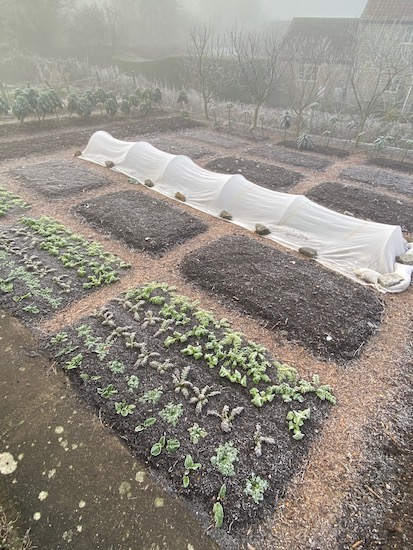
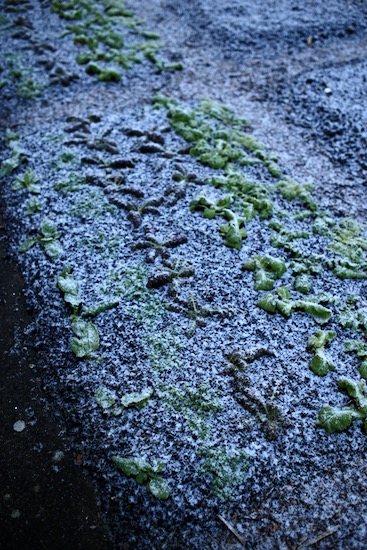
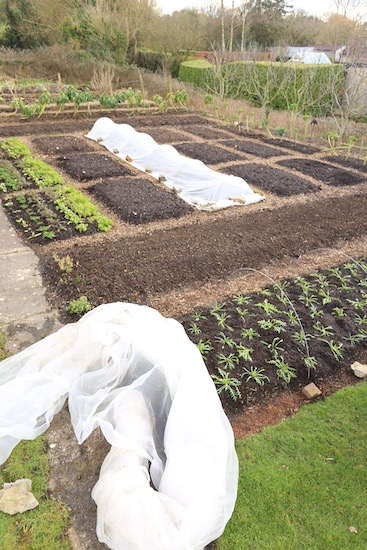
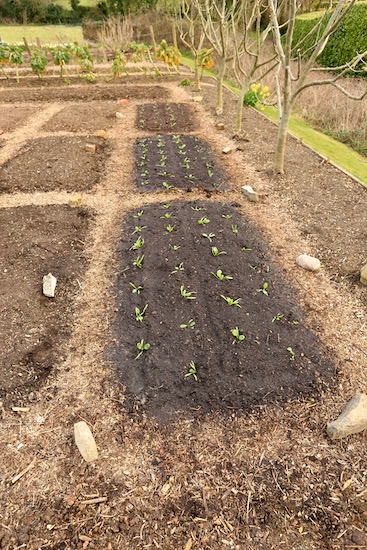


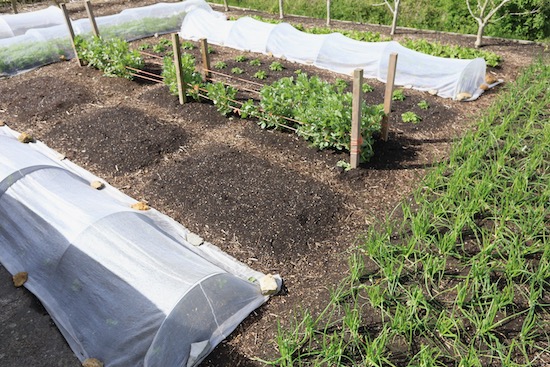

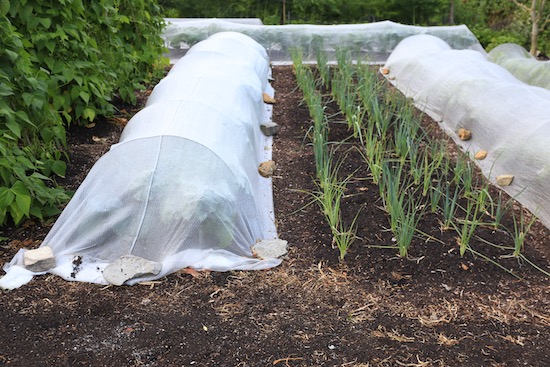


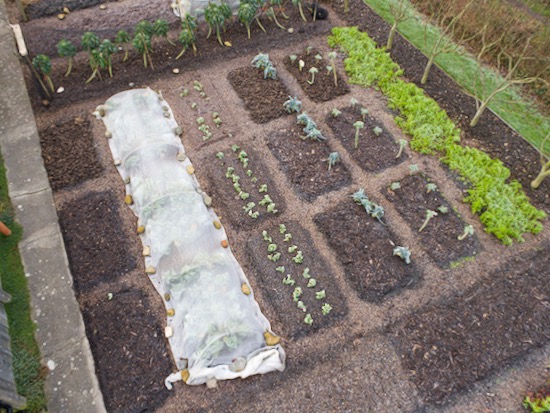























It appears the composted cow manure makes all the difference compared to just garden ompost – I have just garden compost with a small bit of chicken bedding – will this be good enough ?
Oh yes, for sure Sarah.
I would not phrase it like that! The composted cow manure increases growth a little, for some of the plantings. If you can find or buy some occasionally, that will make a difference but you will have lovely results without it.
Hi Charles, I have been following your work for many years and am a big fan. Currently living in Norway.
Just curious as to how much by weight you plant of seed potatoes since we are buying seed potatoes here usually by weight.
Here we are recommended to use 2,5 kg for are area planted of 10m2.
Thanks
Kevin
Hi Kevin
That is nice to hear.
It’s a difficult question to answer because some supercolliders are large in some small and it’s more a question of the number you need. All I can say is that figure looks about right, but if your potatoes are smaller, then you need fewer kilograms. Or cut the large potatoes in half.
Hi Charles. We’re down in New Zealand and starting a new garden. We’ve been looking at the trial area as an interesting template, probably not to fully replicate immediately, but perhaps aspirationally. We’re interested in the dimensions of the beds and the area to see how we might adapt it. I can sort of guess from photos and videos but would be awesome to get some numbers from you if you have them. Love your work.
Cheers Chris and it’s 6/5x9m. Beds are 1.2x2m and paths 35cm. Hope your new plot goes well.
Hello Charles,
I made the first compost bin out of pallets on my allotment in Jan/Feb time and I think I have a good mix of green and brown material, weeds, grass, a bag of fresh horse manure and card and crunched up newspaper. I measured the temperature today and I was surprised the 490 mm. thermometer only registered 10c. Am I expecting too much too soon. The bin measures 4x4x4 ft. and the contents, while compacting, are about 3ft high.
Best wishes,
Michael.
Hi Michael, seems odd and could be to do with moisture level, amount of air in heap, how quickly assembled and when.
Filling a heap like that to say 4-5ft high within a few days would see 50C in the middle after a few days.
You will still get a result but more slowly!
Lining pallet sides with cardboard, say next time, helps hold warmth.
Dear Charles,
I’m following you for a long time now and I worship you and your work!
Your findings with no dig are already quite revolutionary and awesome. They kind of match the whole soil food web theory.
What I find even more striking though is, that your yields on the same area more than doubled across all three stripes! I feel like this is the real revolution here. Do you have any idea as to why that is? Did you plant more seeds? Did you change anything else?
Also, before you started those three stripes, what has been there before?
If there has been green lawn before it kind of would make sense, as the soil structure would be building up over the years where you add the compost, with subsequent crop yield boosts.
But again – what do you think is the reason? Because again… more than doubling the overall yields across all stripes is the actual revelation!
I would really appreciate an answer from you on this topic! 🙂
Keep on doing your great work and thanks for it!!
Best wishes from Germany
Marco
Hello Marco
Thanks for writing, and nice you had a read here.
Yes it’s a good increase, explained partly by my late start in year one, so the dying pasture roots were taking some nutrients to decompose, and also in 2013 I added no compost to 1 and 2.
So discount 2013.
In 2014 there were some leatherjackets eating roots, not too much though.
I have increased cropping and that is some of the reason.
There is also the no rotation trial happening across all strips and this year the squash (year 6 of 7 in same place) were poor so I may swap them with lettuce & chicory.
Charles,
Thank you for your willingness to experiment.
Is one possibility that root crops like carrots and beets produce higher yields when their beds are forked? The carrot yields are striking. The beet yields are mixed.
It might make some intuitive sense. Whether it is true or not, I don’t know.
Thank you.
Hi Billy Joe, an interesting question.
The % of carrots forking is not high enough to influence results.
Perhaps if enough of them obligingly made two nice roots, it could make a difference!
Hello Charles. My name Malcolm. We have a allotment ina place call Alsager .at the moment we are in Spain. We always get back in April time after been away for the English winter. We I get I am going to start to do the no dig the same as you. I will take some photos before and after , and then forward them onto you. Can’t wait to get started , by for now.
May your harvests be good Malcolm